Oscar Wenderoth
| Oscar Wenderoth | |
|---|---|
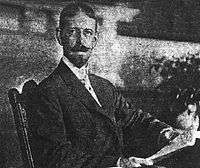 | |
| Born |
April 10, 1871[1] Philadelphia, Pennsylvania U.S.A. |
| Died |
April 14, 1938 (aged 67) New York, New York, U.S.A. |
| Nationality | American |
| Occupation | Architect |
Oscar Wenderoth (1871–1938) was an American architect[2] who served as director of the Office of the Supervising Architect from 1912 to 1915. He is identified as the architect of many government buildings built during that period, including some listed on the National Register of Historic Places.
Wenderoth was born in Philadelphia in 1871 and was the son of the noted photographer Frederick August Wenderoth, a pioneer "...in addressing the public's desire for colored photographs."[3] Early in his architectural career Oscar worked for the New York City firm of Carrere and Hastings. He first joined the Office of Supervising Architect as a senior architectural draftsman in 1897, working in the office for three separate time periods before being appointed as its director.[4]
He was appointed to the directorship by President William Howard Taft in 1912. He resigned in 1915 without providing a public explanation of his resignation.[4]
Selected Government Buildings
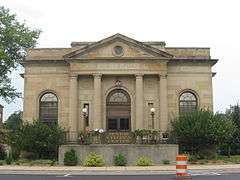 United States Post Office (now Senior Citizen's Center), Bowling Green, Ohio, 1913
United States Post Office (now Senior Citizen's Center), Bowling Green, Ohio, 1913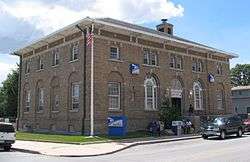 United States Post Office, Blue Island, Illinois, 1914
United States Post Office, Blue Island, Illinois, 1914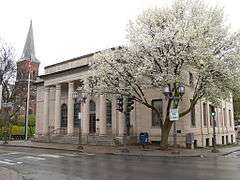 United States Post Office, Oneonta, New York, 1915
United States Post Office, Oneonta, New York, 1915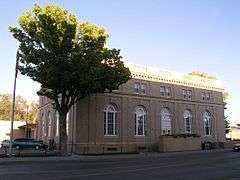 United States Post Office, Miles City, Montana, 1916
United States Post Office, Miles City, Montana, 1916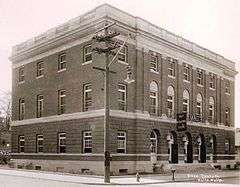 United States Post Office and Courthouse, Pendleton, Oregon, 1916
United States Post Office and Courthouse, Pendleton, Oregon, 1916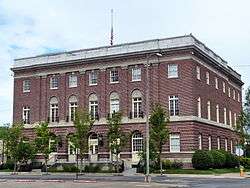 James A. Redden Federal Courthouse, Medford, Oregon, 1916
James A. Redden Federal Courthouse, Medford, Oregon, 1916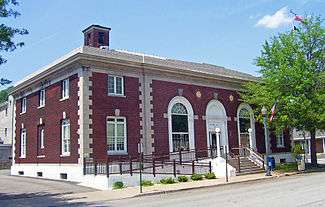 United States Post Office, Port Jervis, New York, c.1920
United States Post Office, Port Jervis, New York, c.1920
References
- ↑ "T-SQUARE CLUB MEMBER AHEAD - Oscar Wenderoth is Appointed Senior Draftsman to the Supervising Architect of the United States". The (Philadelphia, Pennsylvania) Times: 6. March 25, 1897.
- ↑ Oscar Wenderoth digital.lib
- ↑ "American Portrait and Mourning Miniatures - John Henry Brown". Yale University Art Gallery. Retrieved 2015-02-08.
- 1 2 New York Times April 11, 1915
| Preceded by James Knox Taylor |
Office of the Supervising Architect 1913–1914 |
Succeeded by James A. Wetmore |